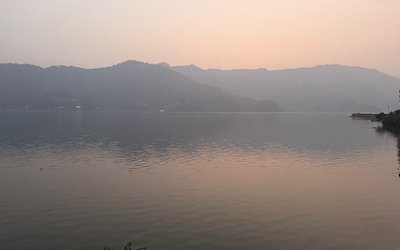
As the demand for energy grows in the country, all kinds of sources, including solar, bio-mass, biogas and water resources, figure in the discussions. Nepal has exploited most of these sources, but wind is yet to be tapped.
Establishing two small scale turbines in Nawalparasi district to generate energy, Practical Action has already shown that Nepal has the potential to exploit wind power for energy.
Dominated by hydro power, the talks of policy makers often ignore the wind power. Although Nepal started to harness wind power back in 1980s with installation of small turbines in Mustang district, the turbines did not last long. Giving the bitter example of Mustang, Nepalese policy makers did not enter in the area of wind power for quite a long time.
As countries around the world are in search of renewable energy sources, wind power promises cheap and reliable source to generate the power. Thus, the three years' interim Plan 2013-2016 has proposed to generate wind energy for the first time. As there is virtually no data available, no one can be sure whether it is commercially viable or not.
Studies have shown that Nepal has the potential to generate energy from wind, but it is yet to be exploited properly. Dominated by water resources, Nepal’s energy sector has recently started to use solar and bio-gas in mass scale.
At a time when Nepal is looking to exploit wind power, Practical Action in association with Kathmandu Alternative Power and Energy Group (KAPEG) recently completed a two-year long action research project “Development of commercially viable wind power system in Nepal” funded by Renewable Nepal program.
“Our research has shown that there is an immense opportunity to exploit wind to generate the energy,” said Vishwa Amatya, Head of Energy Program, Practical Action South Asia Regional Office.
Expressing his view on wind power at a half day dissemination workshop to share the findings and outcome of the research to key stakeholders, Amatya pointed out the need of further research and study to make wind power commercially viable.
As Nepal needs huge resources to conduct the study to build big wind turbines, the country can start installing small turbine like in Nawalparasi.
During the sharing workshop, the presenter highlighted the issues like principles and technical details of “Small Scale Wind Turbine System”; prospects of using local materials and skills, wind turbine resource assessment modules, prospects of imported small wind turbine system and prospects and challenges for the small wind turbines system in Nepal.
Chaired by officiating Executive Director of Alternative Energy Promotion Center (APEC), the research project Development of Commercial viable wind power system in Nepal is funded by Renewable Nepal Program.
“The project was able to develop and test a 300 watt wind turbine system using locally available resources and analyze commercial viability of the project in Nepal,” said Amatya. “After having rigorous measurements and analysis, a final version of prototype was developed and installed at Nagdhunga Thankot.”
A study by the Solar and Wind Energy Resource Assessment Project conducted by Nepal government has found that Nepal has potential of more than3000 MW of electricity from wind energy.
“Although we are still in the initial stage in collecting data, National Planning Commission has made it clear that Nepal needs to harness wind power,” said Dr. Govinda Nepal, member of National Planning Commission. “The study, conducted by Practical Action, has justified our plan to use wind power.”
As National Planning Commission proposes to produce wind energy, Alternative Energy Promotion Center is now working to introduce the wind turbine in certain areas. “We will start some projects in the coming years,” said Ram Prasad Dhital, officiating Executive Director of AEPC. “The findings shred by Practical Action encourage us that small wind turbines can be installed in certain parts of Nepal.
With over 3000 MW of wind energy available in Nepal, use of wind turbine promises to make a lot of difference in energy starved Nepal. Compared to other sources, wind energy is cheaper and this may be affordable for even the poor people of Nepal.
- MELAMCHI WATER SUPPLY: No Interruption During Monsoon
- Jun 25, 2025
- KOREAN RETURNEES: Successful Integration
- Jun 25, 2025
- UPPER TRISHULI-1: Engaging With Local
- Jun 25, 2025
- IME GROUP: Twenty Five Years Of Journey
- Jun 24, 2025
- NEPAL’S AIR POLLUTION: A Growing Health Concern
- Jun 24, 2025















